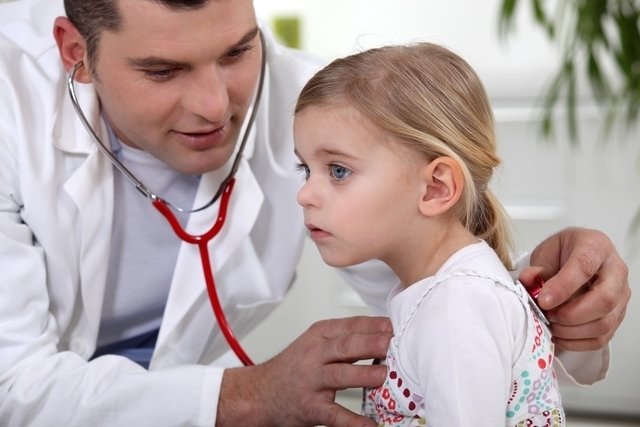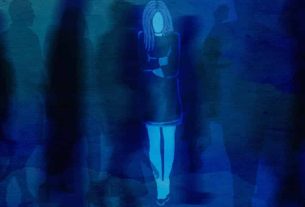The treatment of childhood pneumonia lasts around 10 days and is generally done with the use of antibiotics, which are chosen according to the agent causing the disease, and the use of oral amoxicillin or penicillin injection, prescribed by the pediatrician, may be indicated.
Although pneumonia in children can be treated at home, if symptoms such as difficulty breathing or tiredness are present, treatment should be carried out by admission to the hospital. This is because other measures, such as oxygen therapy or non-invasive ventilation, may be necessary. Learn how to recognize the signs and symptoms of pneumonia.
If pneumonia is suspected, it is important to consult a pediatrician for an evaluation and to initiate appropriate treatment. However, if symptoms such as difficulty breathing and tiredness are present, it is recommended to seek emergency care.

The main options for treating pneumonia in children are:
1. Antibiotics
Antibiotics such as amoxicillin and azithromycin are usually indicated when pneumonia is suspected to be caused by bacteria. Furthermore, the choice of antibiotic usually depends on the child’s age, the suspicion of which microorganism is causing the infection and the severity of the disease.
2. Antivirals
Antivirals, such as oseltamivir, are normally indicated in cases where pneumonia is caused by the influenza A or B virus. See when oseltamivir is indicated.
3. Oxygen therapy
The supply of oxygen is generally indicated when there is hypoxemia, a situation in which the amount of oxygen in the blood is low, or signs of respiratory discomfort, such as bluish lips and tiredness when breathing. Learn about the types of oxygen therapy and other indications.
If you suspect hypoxemia or there are signs of respiratory distress, it is recommended to seek emergency care.
4. Bronchodilators
Bronchodilators such as salbutamol are generally indicated when there are symptoms such as difficulty breathing and wheezing, which may indicate the presence of bronchoconstriction. See what salbutamol is for and how to use it.
5. Antipyretics
Antipyretics such as paracetamol or dipyrone are usually indicated in case of fever, generally when the axillary temperature is above 38ºC.
6. Keep the airways clear
It is important to keep the airways clean, because excess secretion in the nose can make it difficult for the child to breathe properly. One way to clean the nose is by washing the nose with saline solution, which can be carried out with the child sitting down and using a syringe without a needle to inject the serum through the child’s nostrils.
7. Food and hydration
Maintaining adequate nutrition and hydration is important to avoid dehydration. However, if the child already shows signs of dehydration, such as less urine and crying with few tears, or is unable to eat, it is important to go to an emergency room for evaluation. Learn how to identify the signs of dehydration in children.
8. Avoid very intense efforts
Very intense efforts should be avoided if they cause discomfort in the child. Although rest is not usually necessary in the treatment of pneumonia, activities such as playing, cycling or playing ball can be carried out as long as they are not too intense and the child feels well.
When to seek an emergency
It is recommended to seek an emergency in case of:
- Age less than 3 months;
- Seizures;
- Purplish lips or fingertips;
- Great movement of the ribs or abdomen when breathing;
- Fatigue or groaning when breathing;
- Somnolence;
- Fainting;
- Difficulty ingesting food and/or liquids;
- History of chronic diseases, such as cystic fibrosis or sickle cell anemia;
- Frequent vomiting.
Furthermore, if the child is already being treated with antibiotics for pneumonia and does not show signs of improvement after 72 hours, such as an improvement in fever or feeling unwell, it is recommended to seek an emergency room for a new evaluation.
Bibliography
- NAPOLITANO, Natalie et al. AARC Clinical Practice Guideline: Management of Pediatric Patients With Oxygen in the Acute Care Setting. RESPIRATORY CARE. Vol.66, n.7. 1214–1223, 2021
- SAME, Rebecca G. et al. The Association of Antibiotic Duration With Successful Treatment of Community-Acquired Pneumonia in Children. J Pediatric Infect Dis Soc. Vol.10, n.3. 267–273, 2021
- AEHLERT, Barbara et al. PALS: Pediatric Advanced Life Support Study Guide. 4.ed. Burlington, MA: Jones & Bartlett Learning, 2018.
- STATPEARLS. Pediatric Pneumonia. 2022. Available at: <https://www.ncbi.nlm.nih.gov/books/NBK536940/>. Accessed on Jul 28, 2022
- MESSINGER, Amanda I. et al. Management of Pediatric Community-acquired Bacterial Pneumonia. Pediatrics in Review. Vol.38, n.9. 394–409, 2017
- NASCIMENTO-CARVALHO, Cristiana M. Community-acquired pneumonia among children: the latest evidence for an updated management. J Pediatr (Rio J). Vol.96, n.1. 29-38, 2020

Sign up for our newsletter and stay up to date with exclusive news
that can transform your routine!
Warning: Undefined array key "title" in /home/storelat/public_html/wp-content/plugins/link-whisper-premium/templates/frontend/related-posts.php on line 12
Warning: Undefined array key "title_tag" in /home/storelat/public_html/wp-content/plugins/link-whisper-premium/templates/frontend/related-posts.php on line 13




